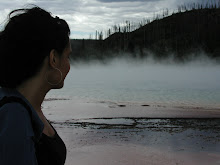






Urban Weather Prairies - Symphonic Studies in D Minor: 2008, Reed, wood, data 14’x12’x12’, 2008, antarctic tidal rhythms, Reed, wood, styrofoam, data, 8’ x 6’ x 3’, 2006, A Warm Winter – Cape Cod (December 2006/ January 2007), Reed, wood, data, 6’x 5’x6’, 2007, Wind Anemometer: Herring Cove, Cape Cod: 2008, Reed, wood, data 68”x40”x37”, Barometric Pressure: Herring Cove, Cape Cod: April 12- May 10, 2008, Reed, wood, data 36”x36”x36’, 2008
'My work focuses on the intersection of art and science and the visual articulation of scientific observations. Using the methodologies and processes of both disciplines, I translate scientific data related to ecology, climate change and meteorology into three-dimensional structures... The data I use is a combination of my own, which I gather on a daily basis using low-tech data-collecting devices, as well as regional or global data from the Internet. By staying true to the numbers, these woven pieces tread an uneasy divide between functioning both as sculptures in space as well as instruments that could be used in the actual environment from which the data originates... All of these efforts in the outdoors and in the studio ar driven by a desire to get a deeper glimpse into the complexity of behavioral interactions of living/non-living systems that make up or are influenced by weather. The ultimate purpose of this project is to gain a better understanding of what weather means in this age of human-induced climate change.'
click here for more...




Wow! I came her to comment on how wonderful this work was and much to my surprise saw mine peeking up from the bottom of my screen!
ReplyDeleteThere is an excellent on WGBH's website:
ReplyDeletehttp://forum-network.org/lecture/weaving-science-sculpture
I like the early pieces best becuase the scientific lesson is more immediate and it's clear how the data impacts the form. Many later pieces include so much data that the forms become almost unreadable. What remains impressive, however is the esthetic skill with which Ms. Miebach selects material to represent each data set. I wonder how much control she exerts over choosing the objects and orchestrating their profusion. Does she know for instance that cloudbank patterns will feature more prominantly in a certain piece and then decide to represent them with white balls becuase it would be pretty? Or does she watch with amazement as scuptures unfold in front of her eyes?
This is a great example of what Robert Irwin might consider Conditional Art.